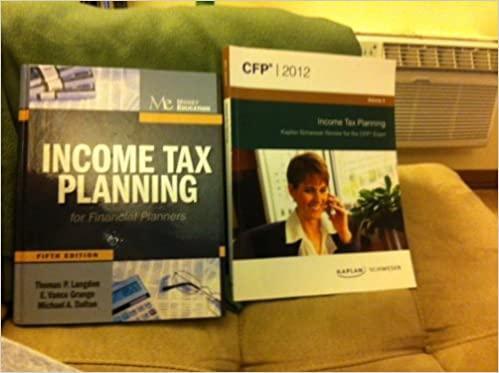Question
Sarah loans $50,000 to her best friend, John. John uses the money to open a pizza parlor next to the local high school. Three years
Sarah loans $50,000 to her best friend, John. John uses the money to open a pizza parlor next to the local high school. Three years later, when John still owed Sarah $15,000, John closed the pizza parlor and declared bankruptcy. Discuss the appropriate tax treatment for Sarah.
Assuming Sarah is not in the business of lending money,
A.
she must treat the loan as a business bad debt subject to long-term capital loss rules. The loan was made for a business purpose, and the $15,000 John owed was three years into the loan, so if Sarah has no capital gains for the year, she can take a capital loss deduction of $10,000, and carryover the remainder as a long-term capital loss.
B.
she must treat the loan as nonbusiness bad debt subject to the short-term capital loss rules. If Sarah has no capital gains for the year, she make take a capital loss deduction of $3,000, and carryover the remainder.
C.
she can treat the loan as a business bad debt and deduct the entire loss as an ordinary loss in the current year that John declares bankruptcy.
D.
she can treat the loan as nonbusiness bad debt subject to ordinary loss rules. Sarah can take the ordinary loss against the amount of ordinary income she made for the year that John declares bankruptcy.
Step by Step Solution
There are 3 Steps involved in it
Step: 1

Get Instant Access to Expert-Tailored Solutions
See step-by-step solutions with expert insights and AI powered tools for academic success
Step: 2

Step: 3

Ace Your Homework with AI
Get the answers you need in no time with our AI-driven, step-by-step assistance
Get Started


